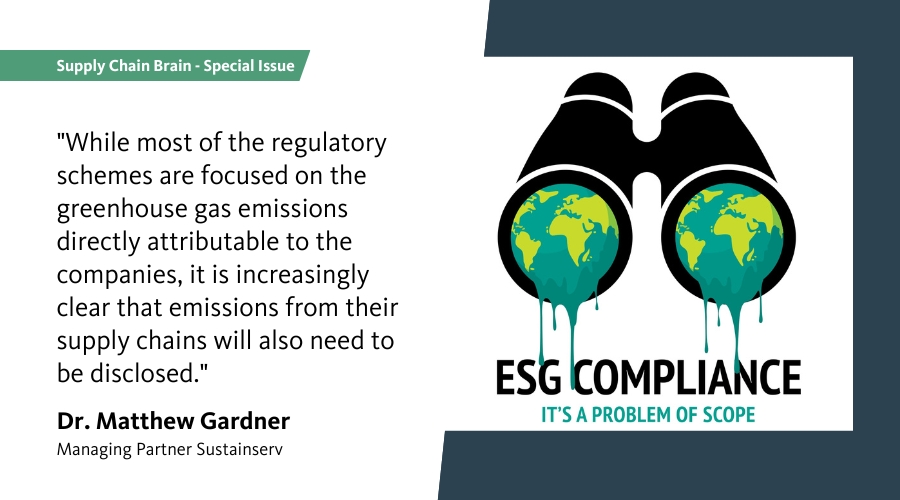In the special issue of the magazine Supply Chain Brain on ‘ESG Compliance – It’s a Problem of Scope’, Matthew Gardner published an important piece highlighting the international push for stricter climate disclosure regulations across supply chains.

He emphasizes the challenges businesses face in adapting to these new requirements. With entities like the SEC, EU, and California leading the charge, companies are now required to report not only their own emissions but also those related to their supply chains. He discusses the complexities of obtaining accurate and consistent emission data from global partners and outlines strategies to enhance collaboration and data sharing among stakeholders.
Accurately Reporting Supply Chain Emissions: The Challenges
- Gathering data about specific products from multiple tiers of suppliers to accurately account for each of their respective impacts is a difficult exercise in record keeping
- A Calculation Methodology must be selected that reflects the realities of raw material sourcing, product manufacturing, transportation, distribution, and other life-cycle impacts that may affect reported greenhouse gas totals.
- Assess Supplier Relationships – These exercises can strain relationships with suppliers. Almost everyone in your supply chain will claim a dearth of resources, lack of expertise, no available time, and other reasons why these requests are unreasonable.
Building a Supportive Ecosystem of Climate Information Sharing: A Roadmap
- Assessing and understanding supply chain materials – Documenting the basic components and manufacturing processes of products to understand their climate impacts. Companies often have this information in Bills of Materials (BOMs), which list the materials used in each product. Making BOMs accessible to customers helps them assess the climate impacts without needing extensive analysis capabilities.
- Assessing the climate impact of suppliers – Focusing on understanding the direct emissions (Scope 1) and energy-related emissions (Scope 2) of suppliers. By estimating these emissions, companies can better grasp the overall environmental impact of their supply chains and provide this information upon request.
- Engage and collaborate with suppliers – Companies are encouraged to maintain an open and collaborative approach with supply chain partners to manage increasing information requests and enhance technical sophistication. This helps strengthen relationships and supports mutual sustainability goals.
The climate reporting and regulatory space is rapidly evolving. Companies need to keep their ear to the ground in order to to effectively demonstrate their commitment to climate change mitigation.
